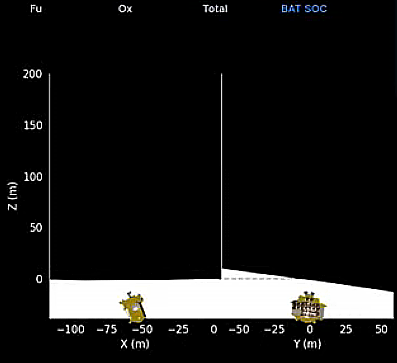Europe signs up four rocket startups to provide it launch services
Capitalism in space: The European Space Agency (ESA) and the European Commission have jointly signed four rocket startups to contracts for eventually providing these government agencies a competitive commercial rocket industry capable of launching its payloads into space.
Each of the companies will receive a “frame” contract as part of the initiative, allowing them to compete for task orders for launching specific missions. Officials did not disclose the anticipated value of those contracts, or how many launch companies competed to participate in the program.
Four of the companies selected for the Flight Ticket Initiative are startups working on small launch vehicles: Isar Aerospace, Orbex, PLD Space and Rocket Factory Augsburg. None of them have yet conducted an orbital launch but expect to do so within the next two years.
Arianespace, ESA’s launch company that previously had a monopoly on launches, also received a frame contract, but it apparently must now compete for future contracts with these startups.
Europe had attempted to compete with SpaceX by once again using Arianespace and its big space contractors to build the Ariane-6 rocket. That project however is years behind schedule, and has resulted in an expendable rocket that is too expensive. Europe has thus been forced to buy launches from SpaceX.
This new arrangement essentialy means that Europe has adopted the recommendations I made in my 2017 policy paper, Capitalism in Space, available here [pdf]. Rather than design, build, and own its rockets, Europe will instead become a customer like anyone else, buying products developed and owned by private and competing European rocket companies.
Of the startup companies listed above, two (Isar and Rocket Factory) are German, one (Orbex) is British, and one is Spanish (PLD). Thus, this arrangement also spreads the wealth throughout Europe.
Unless outside events change things (such as war or economic collapse), this decision is likely to result in a renaissance in Europe’s launch industry comparable to what is happening now in the U.S. and India. If so, the future for the exploration and settlement of the solar system looks bright indeed.
Capitalism in space: The European Space Agency (ESA) and the European Commission have jointly signed four rocket startups to contracts for eventually providing these government agencies a competitive commercial rocket industry capable of launching its payloads into space.
Each of the companies will receive a “frame” contract as part of the initiative, allowing them to compete for task orders for launching specific missions. Officials did not disclose the anticipated value of those contracts, or how many launch companies competed to participate in the program.
Four of the companies selected for the Flight Ticket Initiative are startups working on small launch vehicles: Isar Aerospace, Orbex, PLD Space and Rocket Factory Augsburg. None of them have yet conducted an orbital launch but expect to do so within the next two years.
Arianespace, ESA’s launch company that previously had a monopoly on launches, also received a frame contract, but it apparently must now compete for future contracts with these startups.
Europe had attempted to compete with SpaceX by once again using Arianespace and its big space contractors to build the Ariane-6 rocket. That project however is years behind schedule, and has resulted in an expendable rocket that is too expensive. Europe has thus been forced to buy launches from SpaceX.
This new arrangement essentialy means that Europe has adopted the recommendations I made in my 2017 policy paper, Capitalism in Space, available here [pdf]. Rather than design, build, and own its rockets, Europe will instead become a customer like anyone else, buying products developed and owned by private and competing European rocket companies.
Of the startup companies listed above, two (Isar and Rocket Factory) are German, one (Orbex) is British, and one is Spanish (PLD). Thus, this arrangement also spreads the wealth throughout Europe.
Unless outside events change things (such as war or economic collapse), this decision is likely to result in a renaissance in Europe’s launch industry comparable to what is happening now in the U.S. and India. If so, the future for the exploration and settlement of the solar system looks bright indeed.












